Alain Giraud: A Retrospective at Meteora (Los Angeles, CA)
Alain Giraud: A Retrospective at Meteora
6703 Melrose Ave, Los Angeles, CA 90038
323-402-4311
www.meteora.la
Tue 03/11/2025, 08:10p-10:30p

The last time I reported on Alain Giraud was all the way back in November 2011, shortly after he opened Maison Giraud. Although the restaurant found an audience in the Palisades, it was forced to shutter in July 2016, as the land it was sitting on was slated for redevelopment (it's now part of Palisades Village). After the closure, the Chef continued running his catering company Four Stars Private Cuisine and also appeared at various events and cooking classes, while during the pandemic, he focused on pop-ups, private dinners, and preparation of takeout meals.
Given that it'd been a while since I'd had Giraud's food, when I found out that he was guest cheffing at Meteora, my interest was instantly piqued. But why would the Chef decide to cook at Meteora of all places? Well, before Meteora, the Hollywood address was home to Auburn, and Hatfield's before that, and Red Pearl Kitchen before that, and Meson G before that, and Alex before that, and finally, Citrus before that. If you're not familiar with Citrus, the spot opened in 1987 as Michel Richard's first restaurant, and was a defining eatery of its generation. Giraud joined the team in April 1988 as saucier; he was promoted to Chef de Cuisine the following year, and subsequently helped take Citrus to new heights before decamping at the end of 1996.

I was seated in Meteora's so-called "indoor dining room" next to the bar, which was actually a new experience for me. The room seems to have been spaced out a bit compared to when the restaurant first opened, though I'm not 100% sure about that. In terms of atmosphere, do also note that the music was quite different this evening, as instead of the ambient/electronic stuff normally played, we instead got an array of much cozier French tunes.
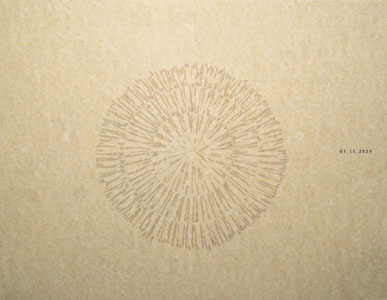
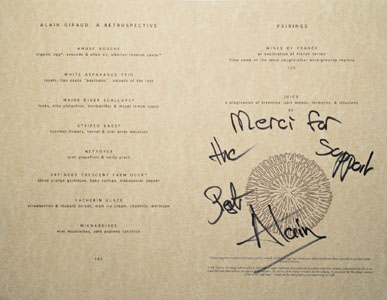
Tonight's menu comprised a selection of Chef Giraud's signature dishes and was priced at $165pp, with optional wine and non-alcoholic beverage pairings tacking on an additional $125/$65. Meanwhile, corkage was $75. Click for larger versions.
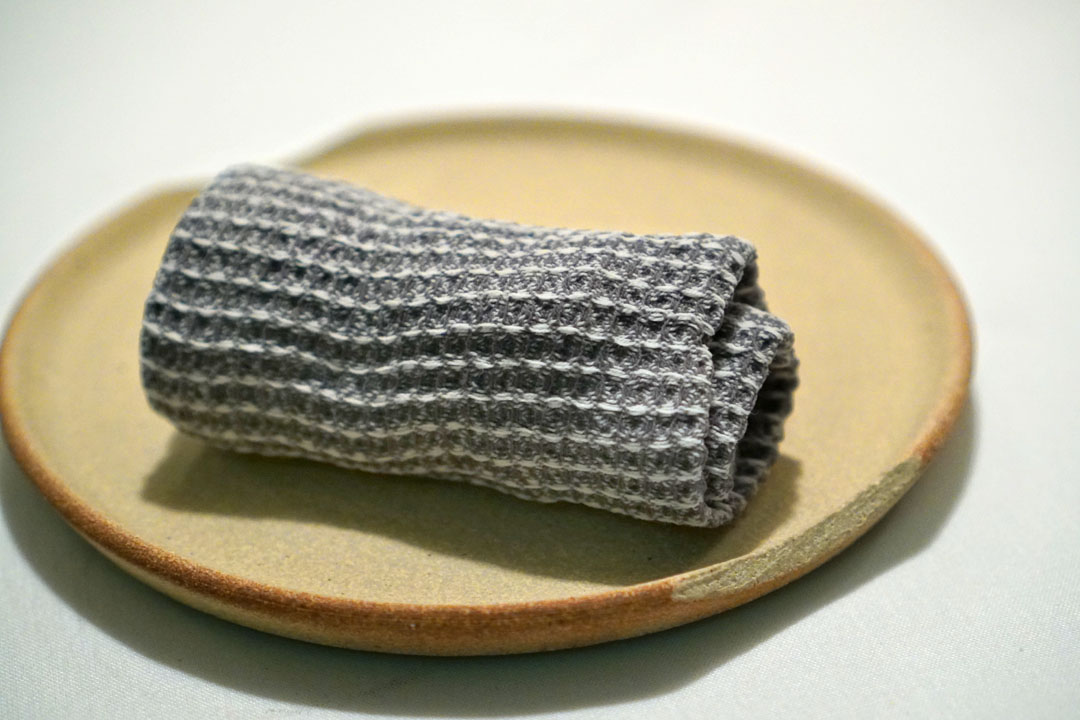
Not long after I was seated, a wetted hand towel arrived--a welcomed touch to be sure.
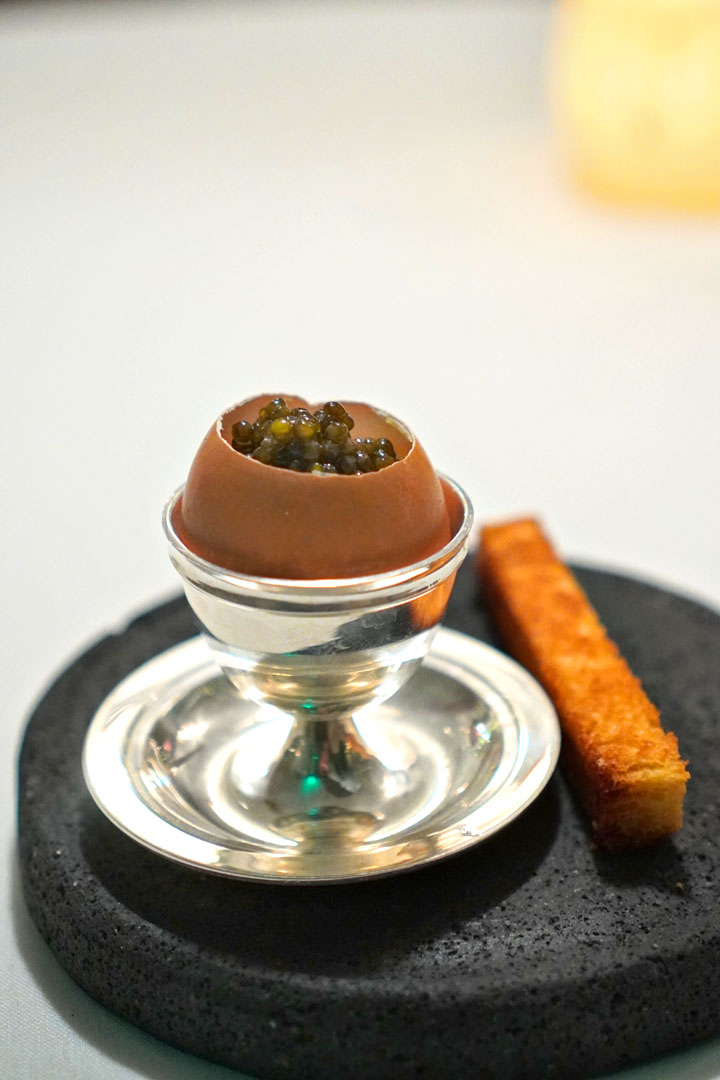
1: Amuse Bouche | organic egg, avocado & olive oil, siberian reserve caviar
Dinner commenced, very fittingly, with a topped egg, one that combined cool, creamy whites with the salty kick of caviar before transitioning to a far lusher amalgam of yolk and avocado. Said yolk also provided for a welcomed temperature contrast, and the included toast certainly made sense as well.
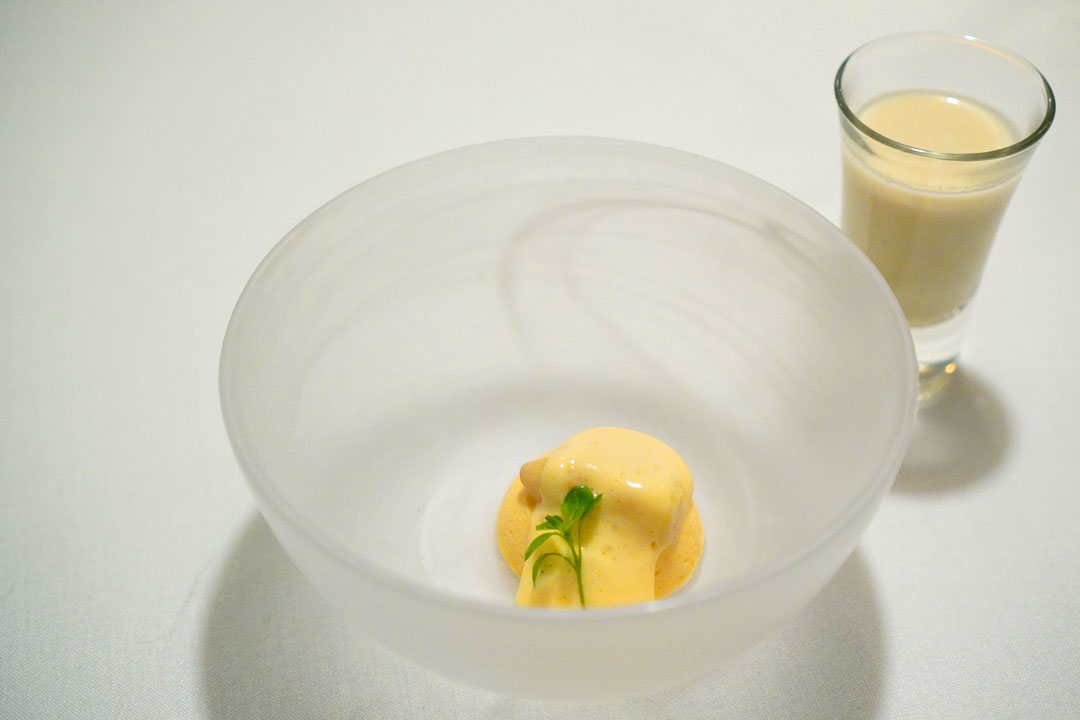
2: White Asparagus Trio | royale, tips sauce "bearnaise", velouté of the rest
Early-in-the-season white asparagus was nice to see, especially since this dish possessed an "old school" feel that was a bit transportive. At the bottom of the bowl was a jiggly custard base made from the tips, boasting a homey sort of flavor profile. On top was a small section of the shoot--tender but still crisp, with a lovely bittersweetness. It worked hand-in-hand with a tangy pseudo-béarnaise, while on the side was a shot of velouté, with its light, vegetal savor lending a refined, classical personality to the course.
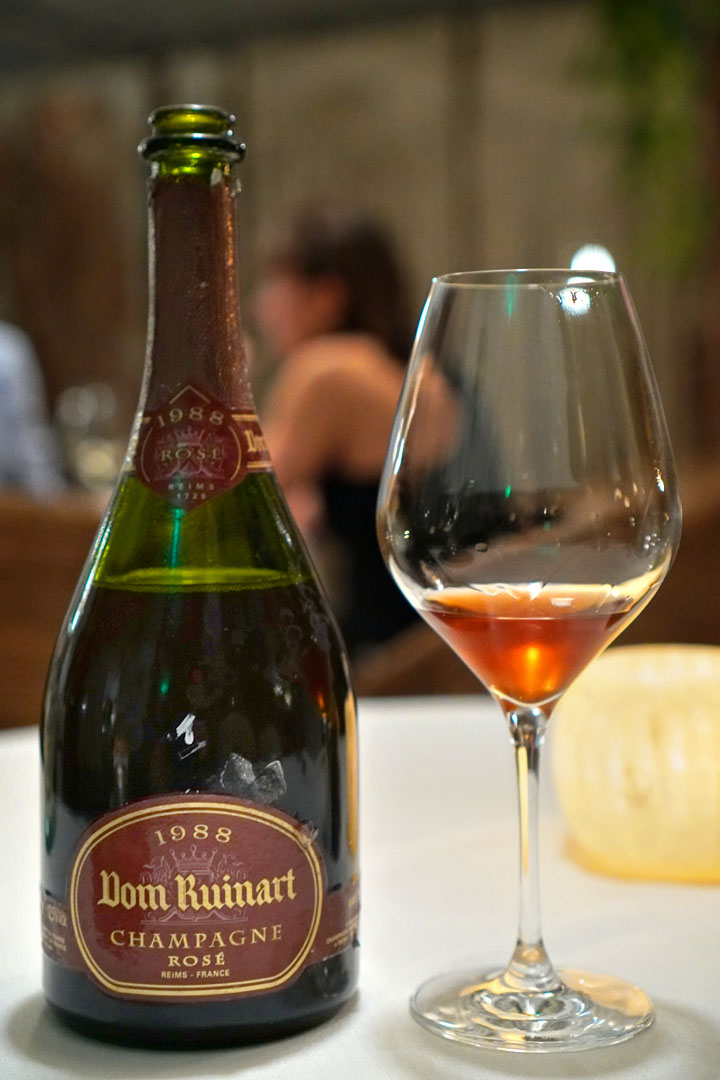
In celebration of Chef Giraud's 1988 start at Citrus, I brought with me a bottle of the 1988 Ruinart Dom Ruinart Champagne Rosé. First whiffs were nutty, sweet, and oxidative, with a tinge of suānméi. On the palate, there was precious little carbonation left, while I tasted sour, oxidative red fruit, nuts, honey, and minerals. With some time, the nose began demonstrating a surprising amount of raisin; this sensation also made itself known taste-wise, as did this meaty element, while I was still getting plenty of that oxidized, yet still vivacious fruit. Further time resulted in aromas and flavors that married sherry and port, and there was also this palpable thread of salinity on the tongue. The wine's madeirized qualities then became more dominant, as did its minerality. Towards the end of the night, I shared some of the bubbly with the Chef, and he sagely likened it to a Rivesaltes due to its nutty, saline, and rancio notes. It was great fun to witness the evolution of the sparkler over the course of the evening, and I have to say that it'd held up quite well after nearly 40 years.
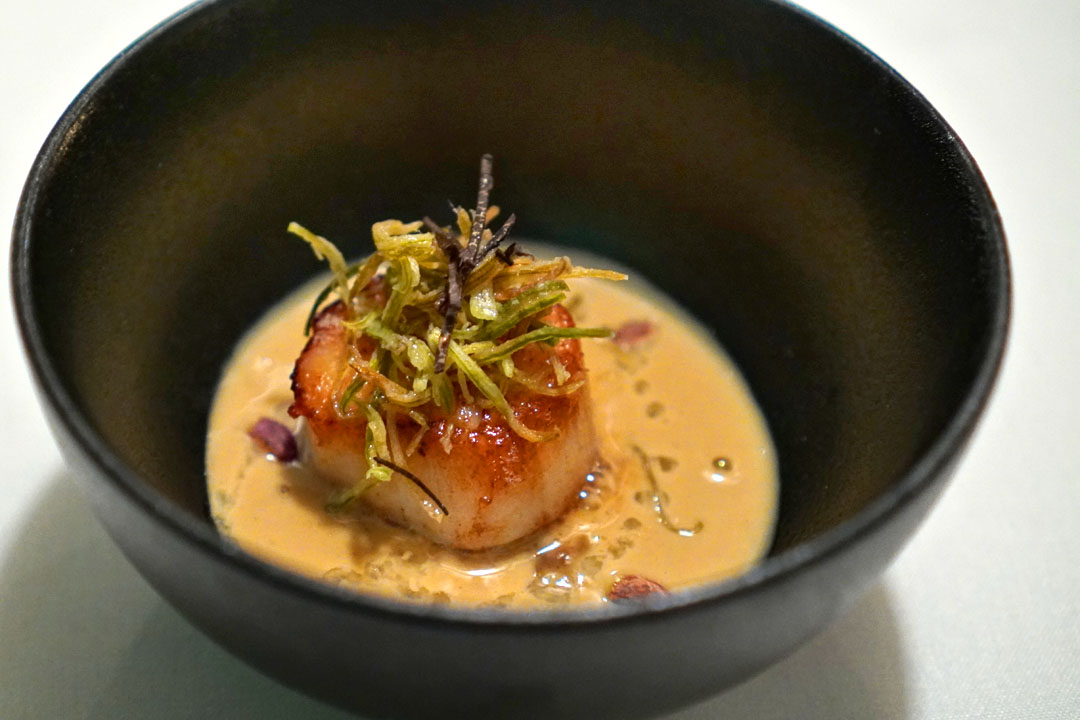
3: Maine Diver Scallops | leeks, ziba pistachios, monbazillac & meyer lemon sauce
A lone scallop from Sue Buxton out of Stonington, ME arrived expertly seared, with an impeccable cook and caramelization. Its sweet, subtle salinity was beautifully communicated, and linked up easily with the savoriness of fried leeks. At the very bottom of the bowl was a sauce of Meyer lemon and Monbazillac wine, while a tart Meyer lemon soubise poured tableside helped tie the dish together.
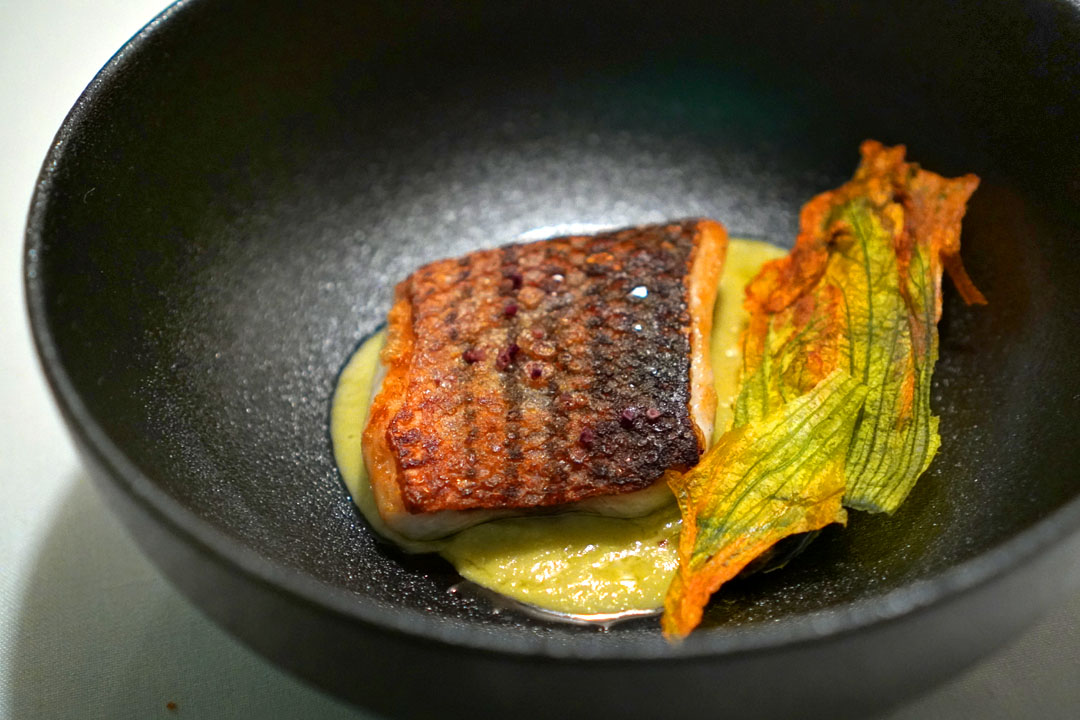
4: Striped Bass | zucchini flowers, fennel & star anise emulsion
Striped bass from Baja California was seared in cast iron, resulting in some wonderfully crispy, salty skin to go along with the fish's juicy, flavorful flesh. Brightening things up were roasted baby courgettes topped with thin slices of raw zucchini and crispy squash blossoms, but far more critical was the dish's base of star anise-fennel emulsion, which imparted a marvelously subtle-but-omnipresent aromatic edge to the bass.
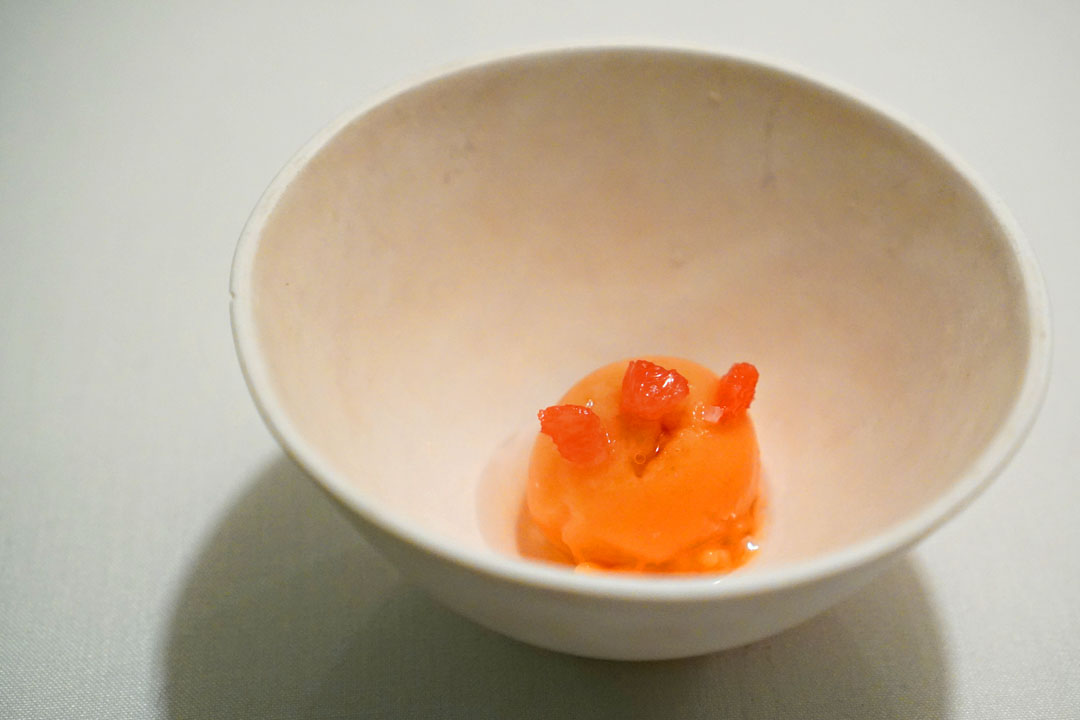
5: Nettoyer | pink grapefruit & noilly prat
Ahead of our final savory course, we enjoyed a palate cleanser comprising an intensely bittersweet pink grapefruit sorbet along with pink grapefruit segments, finished tableside with a splash of spicy, saline Noilly Prat dry vermouth. I quite liked the crunchy bits here as well.
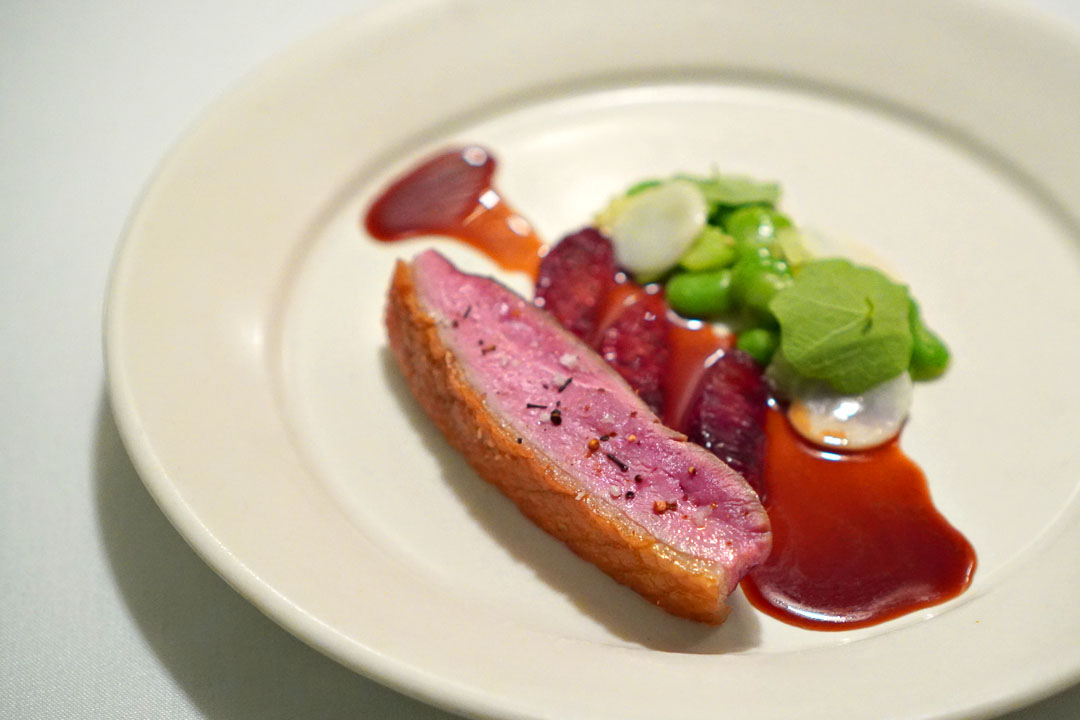
6: Dry-Aged Crescent Farm Duck | blood orange gastrique, baby turnips, madagascar pepper
Seven-day dry-aged Long Island duck was a treat thanks to its bountiful amounts of earthy, anatine, and occasionally "hammy" flavors, well-complemented by a layer of crispy, salty skin. The sting of black pepper served as the perfect accent piece, and I much appreciated the lighter notes imparted by the trio of fava beans, shaved turnips, and nasturtium. Even the blood orange gastrique and suprêmes were to my liking, since their deep, fruity flavors never veered overwhelmingly sweet.
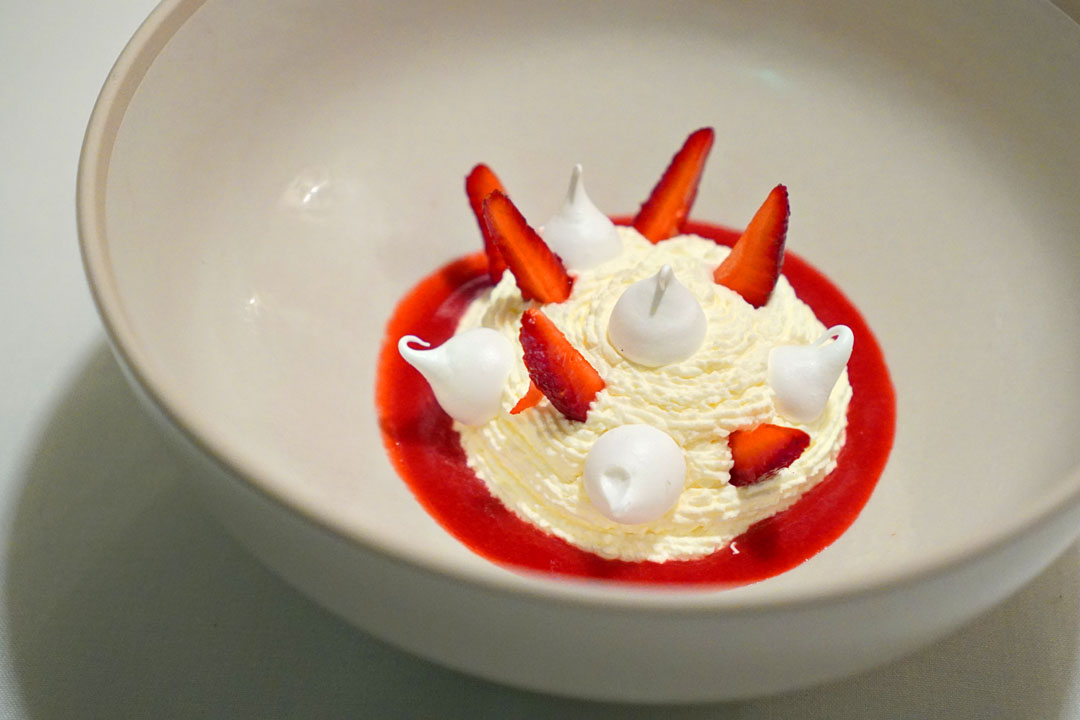
7: Vacherin Glacé | strawberries & rhubarb sorbet, malt ice cream, chantilly, meringue
Next up was a version of Giraud's signature dessert, composed of a base of raspberry coulis, a strawberry-rhubarb sorbet, dices of rhubarb, ice cream, and Chantilly cream, all crowned with dollops of meringue and slices of fresh Harry's Berries strawberry. It was a pretty flawless combination, with a bevy of fruity, floral, and tart flavors moderated by creamy and subtly malty elements, all while the meringues mixed things up texturally.

8: Mignardises | mini madeleines, pink pralines tartlette
Closing out the meal were two types of petit four. I began with the petite madeleine, which came out moist and crisp-edged, with classic flavors and I believe a hint of citrus. Meanwhile, the tartlet was more interesting due to its noticeably savory character that went along with the fruit and what seemed like vanilla.
Well consider me impressed. Given the pop-up nature of this meal, I wasn't quite sure what to expect coming in here, but I have to say that the experience gave me a real sense of the Cal-nouvelle cuisine that the Chef built his reputation on. The dishes did convey this sense of nostalgia, but sentimentality aside, the food really does still hold up after all these years. Given the success of this dinner, I'd like to see Giraud hold a similar event, but highlighting his cooking at Bastide (the space was last home to Caviar Kaspia, and is currently unoccupied). If you recall, following his tenure at Citrus, he opened up Lavande in 1998 before teaming up with director Joe Pytka to launch the restaurant in 2002. The place was a hit, but due to various stressors, he decamped in 2004 to focus on catering. Thus, I never got to try the Chef's cooking at Bastide, so I'd be very curious to see what it was like back in the day. I actually mentioned this idea to him at the end of the night, but sadly, he seemed doubtful of its feasibility.
6703 Melrose Ave, Los Angeles, CA 90038
323-402-4311
www.meteora.la
Tue 03/11/2025, 08:10p-10:30p

The last time I reported on Alain Giraud was all the way back in November 2011, shortly after he opened Maison Giraud. Although the restaurant found an audience in the Palisades, it was forced to shutter in July 2016, as the land it was sitting on was slated for redevelopment (it's now part of Palisades Village). After the closure, the Chef continued running his catering company Four Stars Private Cuisine and also appeared at various events and cooking classes, while during the pandemic, he focused on pop-ups, private dinners, and preparation of takeout meals.
Given that it'd been a while since I'd had Giraud's food, when I found out that he was guest cheffing at Meteora, my interest was instantly piqued. But why would the Chef decide to cook at Meteora of all places? Well, before Meteora, the Hollywood address was home to Auburn, and Hatfield's before that, and Red Pearl Kitchen before that, and Meson G before that, and Alex before that, and finally, Citrus before that. If you're not familiar with Citrus, the spot opened in 1987 as Michel Richard's first restaurant, and was a defining eatery of its generation. Giraud joined the team in April 1988 as saucier; he was promoted to Chef de Cuisine the following year, and subsequently helped take Citrus to new heights before decamping at the end of 1996.

I was seated in Meteora's so-called "indoor dining room" next to the bar, which was actually a new experience for me. The room seems to have been spaced out a bit compared to when the restaurant first opened, though I'm not 100% sure about that. In terms of atmosphere, do also note that the music was quite different this evening, as instead of the ambient/electronic stuff normally played, we instead got an array of much cozier French tunes.


Tonight's menu comprised a selection of Chef Giraud's signature dishes and was priced at $165pp, with optional wine and non-alcoholic beverage pairings tacking on an additional $125/$65. Meanwhile, corkage was $75. Click for larger versions.

Not long after I was seated, a wetted hand towel arrived--a welcomed touch to be sure.

1: Amuse Bouche | organic egg, avocado & olive oil, siberian reserve caviar
Dinner commenced, very fittingly, with a topped egg, one that combined cool, creamy whites with the salty kick of caviar before transitioning to a far lusher amalgam of yolk and avocado. Said yolk also provided for a welcomed temperature contrast, and the included toast certainly made sense as well.

2: White Asparagus Trio | royale, tips sauce "bearnaise", velouté of the rest
Early-in-the-season white asparagus was nice to see, especially since this dish possessed an "old school" feel that was a bit transportive. At the bottom of the bowl was a jiggly custard base made from the tips, boasting a homey sort of flavor profile. On top was a small section of the shoot--tender but still crisp, with a lovely bittersweetness. It worked hand-in-hand with a tangy pseudo-béarnaise, while on the side was a shot of velouté, with its light, vegetal savor lending a refined, classical personality to the course.

In celebration of Chef Giraud's 1988 start at Citrus, I brought with me a bottle of the 1988 Ruinart Dom Ruinart Champagne Rosé. First whiffs were nutty, sweet, and oxidative, with a tinge of suānméi. On the palate, there was precious little carbonation left, while I tasted sour, oxidative red fruit, nuts, honey, and minerals. With some time, the nose began demonstrating a surprising amount of raisin; this sensation also made itself known taste-wise, as did this meaty element, while I was still getting plenty of that oxidized, yet still vivacious fruit. Further time resulted in aromas and flavors that married sherry and port, and there was also this palpable thread of salinity on the tongue. The wine's madeirized qualities then became more dominant, as did its minerality. Towards the end of the night, I shared some of the bubbly with the Chef, and he sagely likened it to a Rivesaltes due to its nutty, saline, and rancio notes. It was great fun to witness the evolution of the sparkler over the course of the evening, and I have to say that it'd held up quite well after nearly 40 years.

3: Maine Diver Scallops | leeks, ziba pistachios, monbazillac & meyer lemon sauce
A lone scallop from Sue Buxton out of Stonington, ME arrived expertly seared, with an impeccable cook and caramelization. Its sweet, subtle salinity was beautifully communicated, and linked up easily with the savoriness of fried leeks. At the very bottom of the bowl was a sauce of Meyer lemon and Monbazillac wine, while a tart Meyer lemon soubise poured tableside helped tie the dish together.

4: Striped Bass | zucchini flowers, fennel & star anise emulsion
Striped bass from Baja California was seared in cast iron, resulting in some wonderfully crispy, salty skin to go along with the fish's juicy, flavorful flesh. Brightening things up were roasted baby courgettes topped with thin slices of raw zucchini and crispy squash blossoms, but far more critical was the dish's base of star anise-fennel emulsion, which imparted a marvelously subtle-but-omnipresent aromatic edge to the bass.

5: Nettoyer | pink grapefruit & noilly prat
Ahead of our final savory course, we enjoyed a palate cleanser comprising an intensely bittersweet pink grapefruit sorbet along with pink grapefruit segments, finished tableside with a splash of spicy, saline Noilly Prat dry vermouth. I quite liked the crunchy bits here as well.

6: Dry-Aged Crescent Farm Duck | blood orange gastrique, baby turnips, madagascar pepper
Seven-day dry-aged Long Island duck was a treat thanks to its bountiful amounts of earthy, anatine, and occasionally "hammy" flavors, well-complemented by a layer of crispy, salty skin. The sting of black pepper served as the perfect accent piece, and I much appreciated the lighter notes imparted by the trio of fava beans, shaved turnips, and nasturtium. Even the blood orange gastrique and suprêmes were to my liking, since their deep, fruity flavors never veered overwhelmingly sweet.

7: Vacherin Glacé | strawberries & rhubarb sorbet, malt ice cream, chantilly, meringue
Next up was a version of Giraud's signature dessert, composed of a base of raspberry coulis, a strawberry-rhubarb sorbet, dices of rhubarb, ice cream, and Chantilly cream, all crowned with dollops of meringue and slices of fresh Harry's Berries strawberry. It was a pretty flawless combination, with a bevy of fruity, floral, and tart flavors moderated by creamy and subtly malty elements, all while the meringues mixed things up texturally.

8: Mignardises | mini madeleines, pink pralines tartlette
Closing out the meal were two types of petit four. I began with the petite madeleine, which came out moist and crisp-edged, with classic flavors and I believe a hint of citrus. Meanwhile, the tartlet was more interesting due to its noticeably savory character that went along with the fruit and what seemed like vanilla.
Well consider me impressed. Given the pop-up nature of this meal, I wasn't quite sure what to expect coming in here, but I have to say that the experience gave me a real sense of the Cal-nouvelle cuisine that the Chef built his reputation on. The dishes did convey this sense of nostalgia, but sentimentality aside, the food really does still hold up after all these years. Given the success of this dinner, I'd like to see Giraud hold a similar event, but highlighting his cooking at Bastide (the space was last home to Caviar Kaspia, and is currently unoccupied). If you recall, following his tenure at Citrus, he opened up Lavande in 1998 before teaming up with director Joe Pytka to launch the restaurant in 2002. The place was a hit, but due to various stressors, he decamped in 2004 to focus on catering. Thus, I never got to try the Chef's cooking at Bastide, so I'd be very curious to see what it was like back in the day. I actually mentioned this idea to him at the end of the night, but sadly, he seemed doubtful of its feasibility.
0 Comments:
Post a Comment
Subscribe to Post Comments [Atom]
<< Home